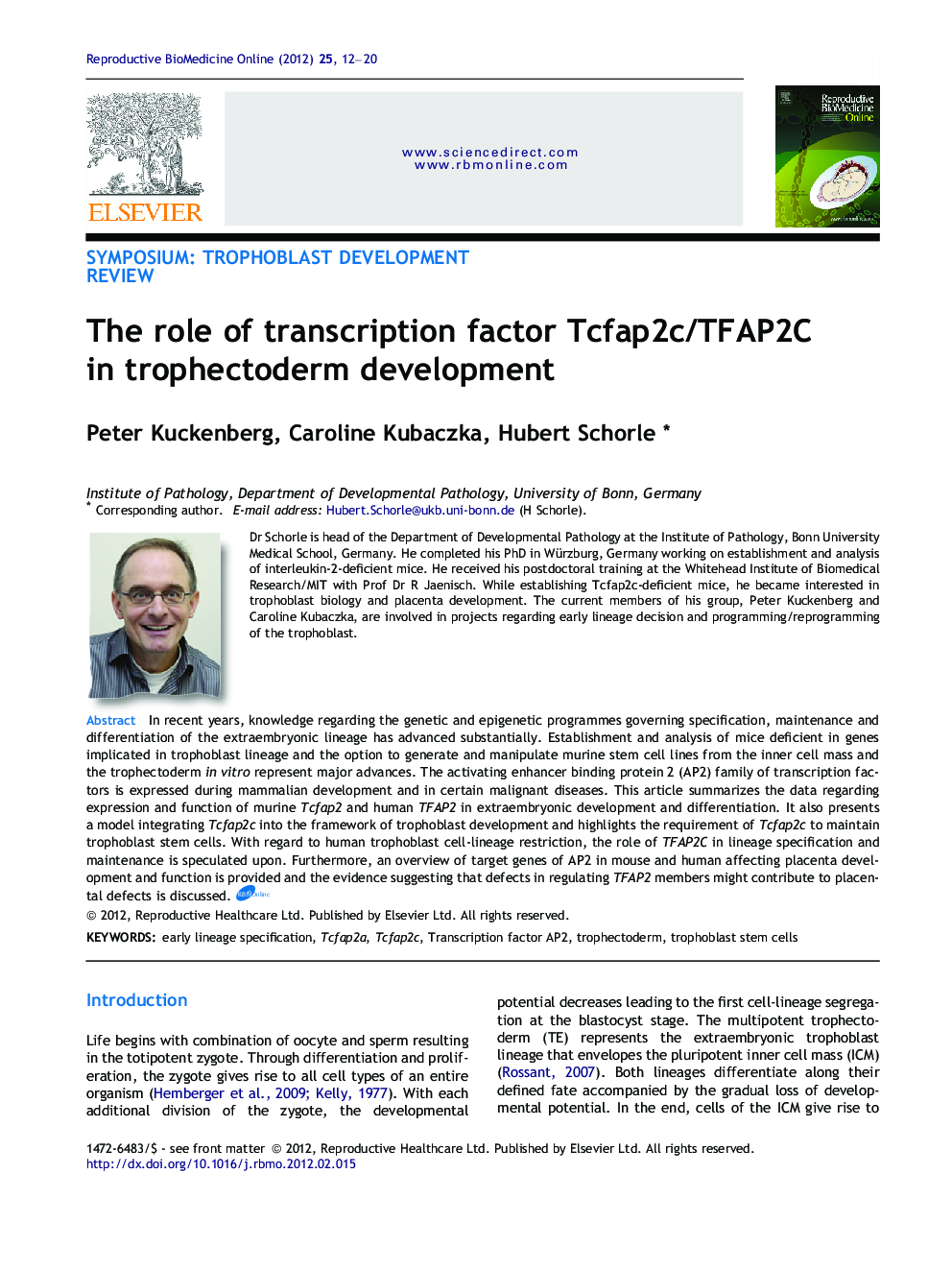| Article ID | Journal | Published Year | Pages | File Type |
|---|---|---|---|---|
| 3970481 | Reproductive BioMedicine Online | 2012 | 9 Pages |
In recent years, knowledge regarding the genetic and epigenetic programmes governing specification, maintenance and differentiation of the extraembryonic lineage has advanced substantially. Establishment and analysis of mice deficient in genes implicated in trophoblast lineage and the option to generate and manipulate murine stem cell lines from the inner cell mass and the trophectoderm in vitro represent major advances. The activating enhancer binding protein 2 (AP2) family of transcription factors is expressed during mammalian development and in certain malignant diseases. This article summarizes the data regarding expression and function of murine Tcfap2 and human TFAP2 in extraembryonic development and differentiation. It also presents a model integrating Tcfap2c into the framework of trophoblast development and highlights the requirement of Tcfap2c to maintain trophoblast stem cells. With regard to human trophoblast cell-lineage restriction, the role of TFAP2C in lineage specification and maintenance is speculated upon. Furthermore, an overview of target genes of AP2 in mouse and human affecting placenta development and function is provided and the evidence suggesting that defects in regulating TFAP2 members might contribute to placental defects is discussed.During recent years, much has been learned about role and function of TFAP2C/Tcfap2c with regard to trophoblast development and placenta development. Using murine models and cell systems, we learned that this gene serves as an important regulator in trophoblast stem cell maintenance and have begun to decipher the molecular network TFAP2C/Tcfap2c is integrated in. However, knowledge on its function and role in the differentiating placental lineage is rather limited and needs to be extended. In this respect, transgenic systems aimed at conditional deletion of Tcfap2c in the trophectoderm once differentiation is initiated are on the way. In addition, we have evidence that elevated TCFAP2C concentrations might lead to placental defects such as pre-eclampsia. Clearly more work is needed to further substantiate this claim. However, description and analysis on upstream regulators of TFAP2C will eventually lead to a better understanding of the molecular nature underlying placental defects. Such basic research may open up the field for translational projects aiming at treatment options via patient-specific targeted therapy.
